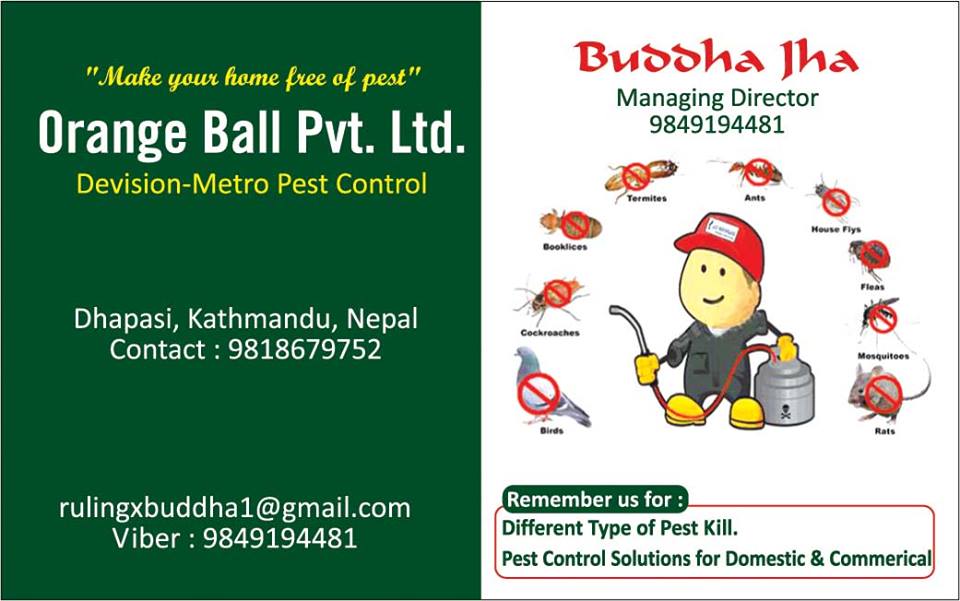Drywood Termites: Facts, Identification & Control
Call us for free assessment or to solve problem now! Call us on - 9849194481 / 9849194481
Latin Name
 |
| Drywood termites |
Cryptotermes spp. and Incisitermes spp.
Appearance
There are three distinct groups into which termites are divided: subterranean, drywood, and dampwood. Since the worker termites in these groups more or less look the same, the appearance of the reproductive caste (alates) and soldiers is important.
Alates, or swarmers, have two sets of wings. The front set of wings has a pattern of three or more heavy, well-pigmented veins in the outer part of that front wing. Also, swarmers shed their wings very quickly after swarming, so most all dead swarmer bodies do not have attached wings. This is a good characteristic to distinguish drywood termite swarms from subterranean termite swarms since subterranean swarmers will consist of dead swarmers with and without attached wings.Swarmers can be up to 12 mm long.
Drywood termite soldiers have large mandibles (mouthparts) with teeth and their pronotum is as wide, or wider, than the head. Also, most drywood termite soldiers and workers are larger than the soldiers and workers in subterranean termite colonies.
Habit
Create colonies in wood, with no connection to the ground necessary; often found in attic wood; need very little moisture.
Behavior, Diet & Habits
Wood and occasionally other cellulose material.
Reproduction
Nymphs pass through four to seven instars before reaching adulthood; sexual forms eventually swarm to form new colonies.
Signs of a Drywood Termite Infestation
Swarms
When a drywood termite colony is mature, swarms of winged male and female reproductive insects are produced. These reproductive termites fly out of their colony to create new colonies after mating. Warm temperatures and heavy rains instigate swarms.
Frass
Drywood termites extract as much water as possible from the feces to conserve it. The result are very distinct fecal pellets called frass. They are a hexagonal and all are a similar size of 1 mm long. The termites kick them out of their tunnel. Appearance of mounds of these pellets indicate activity. It is important to note that pellets can remain almost indefinitely from a dead colony and may mislead a homeowner that it is current activity. Contact a termite control professional to confirm current activity.
More Information
It is estimated that termites cause over a billion dollars in damage to United States homes each year. Unlike fires, hurricanes and tornadoes, termite damage is seldom covered in homeowner insurance policies. The dangers of termite infestation are also under publicized, leading most homeowners to believe that no preventive measures are necessary.
However, annual inspections are an effective means of preventing major damage to your home. There are two major families of termite present in North America: subterranean and drywood termites. Both species feed on cellulose material, including books, dried plants and furniture, as well structural wood. While subterranean termites burrow underground, drywood termites do not need the soil. After a colony of drywood termites has gained entrance to a home, they are capable of dispersing widely throughout many rooms and floors.
Although drywood termites are far less common than subterranean termites and are found primarily in coastal, southern states and the Southwestern states, drywood termite damage is substantial. Drywood termite infestations are identifiable by piles of fecal pellets. These fecal pellets are often first noticed in places like windowsills. If you find piles of tiny pellets in your home, it could be a sign of a drywood termite infestation. A trained pest control professional can provide a thorough inspection.
Drywood termites Damages
- Drywood termites live in dry wood located above ground, and do not need soil contact since the wood they consume provides the moisture they need for survival. So, drywood termite feeding galleries do not contain mud, as do subterranean termite galleries.
- Drywood termites construct their feeding galleries and often consume all of the wood in a piece of lumber or sheathing right up to the wood’s surface. Therefore, drywood termite wood damage may be recognized by being almost completely consumed with just a rippled, thin layer of painted surface left intact. Feeding galleries vary in size, but the large galleries appear to be connected by a maze of smaller galleries.
- Drywood termites will eat wood in a pattern either with or against the grain. More often than not, the observation of wood eaten against the grain is a sign of drywood termite tunneling and damage. The inside of the feeding tunnel is very smooth and looks like it might have been “finished” and smoothed out with sandpaper.
- Drywood termites produce small, dry pellets called frass. Their feeding tunnels will either contain frass that is packed into the tunnel or may have frass that is “kicked out” of the tunnel to form a small pile of frass. These frass piles look like tiny piles of sand. Unlike sand, a frass pellet has six concave surfaces and measures about one millimeter in length. The “kick out” holes are not always easy to see since drywood termites plug up the exit holes with pieces of frass that have been “cemented” together.
Where does damage often occur?
Drywood termites can infest and damage dry, sound wood. The specific locations of potential damage in a house include the roof sheathing, rafters, joists, siding, trim, steps, decks, porches, floors, subfloors, doors windows and their frames, furniture, walls, interior wood trim and furniture.
Because of the potential complexity and difficulty in finding drywood termite damage, always seek the advice and assistance of your pest management professional.
How bad can it be?
If drywood infestations remain untreated, the resulting infestation will eventually involve many different portions of the structure and result in significant structural and cosmetic damage.
Tired of looking for a Pest Control company you can depend on?
Fed up with the lack of customer service?
Looking for honesty and integrity?Then look no further!!We always put the QUICK into the KILL
For more info : 9818679752 / 9849194481

















cockroaches control in abudhabi
ReplyDeleteAnts, creepy crawlies, cockroaches, termites, Bedbugs, fly and so on are the most generally perceived bugs that can make your home as their home too. They can get some peculiar places in your home that you can't imagine or would observe. Showering chemicals in the right areas may have the ability to block the entry ways of these bugs. It's essential to approach a specialist because of various reasons .
pest control in abudhabi
https://www.smartcareae.com/cockroach-control/
ants control in abudhabi
ReplyDeleteOften the damage caused by bed bugs is falsely associated with cleanliness; Bed bugs are not seasonal insects that swarm on the sight of dirt and garbage. When a home is infected with bed bugs, they can travel easily and multiply rapidly causing complete damage to property and health. Serious health hazards of bed bugs can be in the form of Hepatitis and other blood related diseases. This is the reason why bed bugs control in Abu Dhabi is very important.
bed bugs control in abudhabi
https://www.smartcareae.com/ant-control/